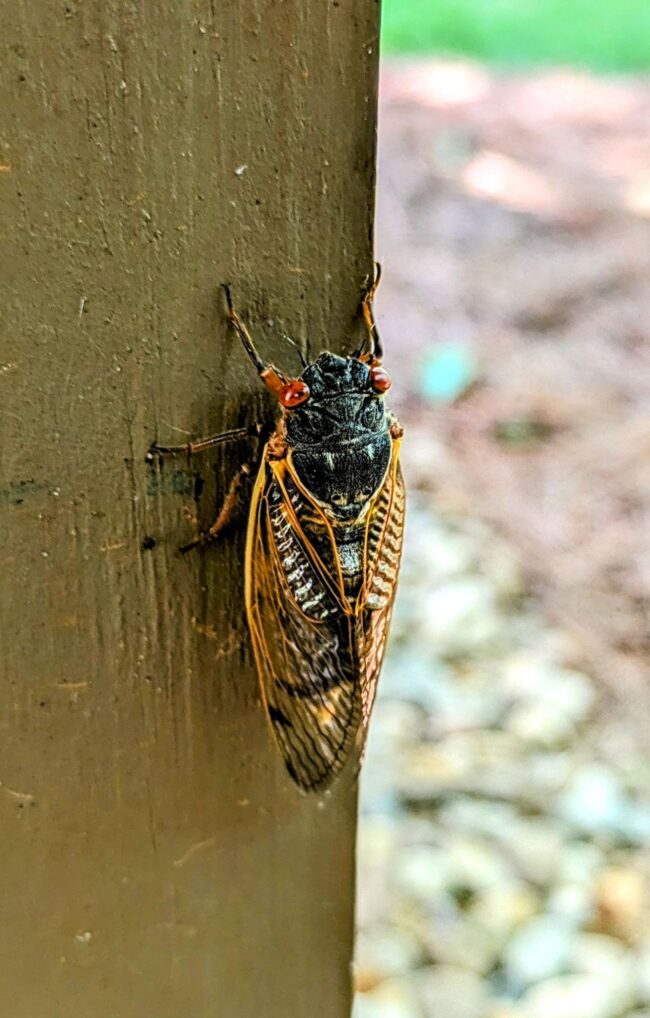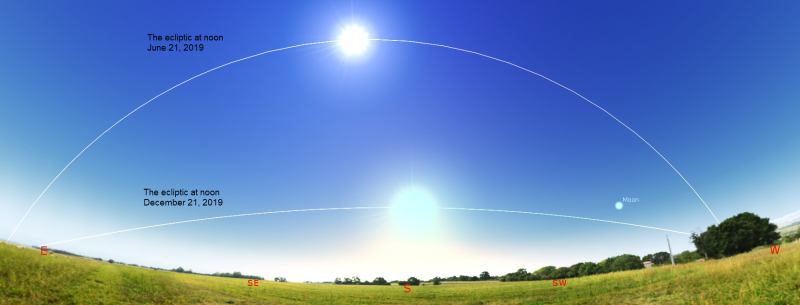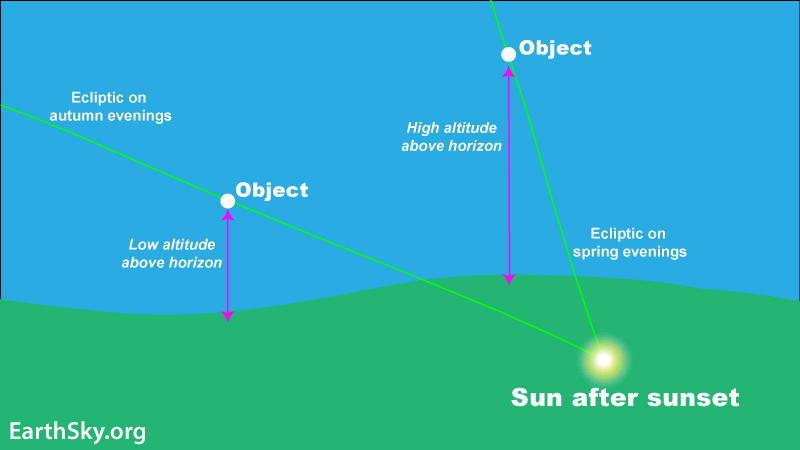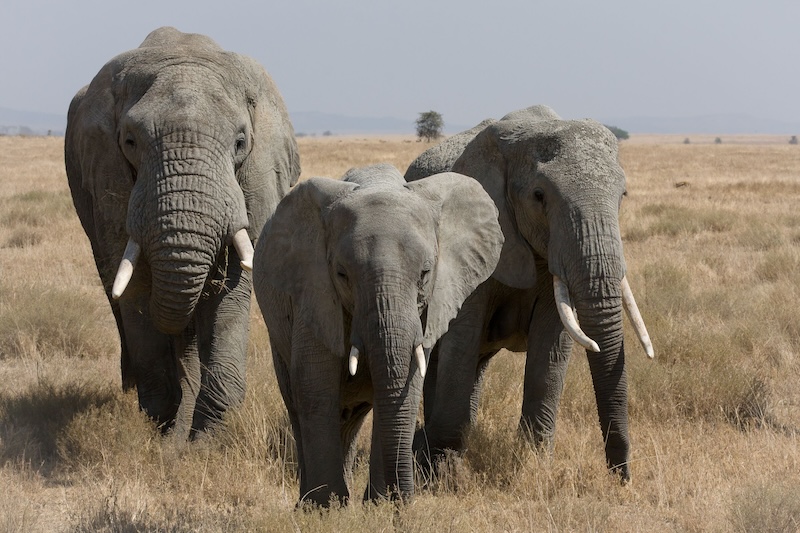
A couple years ago, three young boys fossil hunting in the North Dakota badlands discovered some unusual ancient dinosaur bones. And on June 4, 2024, the Denver Museum of Nature and Science said its scientists later identified the bones as belonging to a rare juvenile Tyrannosaurus rex. The bones will be on view at the museum starting this month. And, it turns out, the fossil – nicknamed Teen Rex – is significant. That’s because few juvenile T. rexes have ever been unearthed. So this specimen is a valuable clue in understanding how these ferocious dinosaurs grew to adulthood.
Discovering the teenage T. rex
In July 2022, three young fossil hunters were searching the arid badlands near Marmarth, North Dakota, for fossils. Liam Fisher was eight years old at the time, his brother Jessin, 11, and their cousin, Kaiden Madsen, was 10. The kids were accompanied by the brothers’ father, Sam Fisher.
The young fossil hunters were amazed to discover large bones protruding from sedimentary rock that formed the badlands hills. Some bones were in fragments, weathering out of the rock. Sam Fisher sent photos of this unusual find to his friend, paleontologist Tyler Lyson at the Denver Museum of Nature and Science. Lyson immediately recognized it as dinosaur bone but could not identify it.

A stunning realization
In July 2023, Lyson and his team went to the site to excavate the fossil. The young fossil hunters who made the discovery joined the expedition. While digging, Lyson unearthed teeth that clearly belonged to a T. rex. Based on the size of the exposed bone and teeth, he realized that the kids had made an extraordinary discovery, a rare juvenile T. rex.
Lyson recounted that stunning moment in an interview:
Sam’s oldest boy, Jessin, and I were digging and brushing and digging and brushing, and all of a sudden, a brush and a T-Rex tooth … pops off, and I pick it up. I look at Jessin. He gasps. He and I, like, share this moment. And then I started brushing where the tooth came out, and we could see three more teeth all lined up in a row.
We just uncovered the lower jaw of this juvenile T-Rex specimen. It was just one of the most remarkable, remarkable moments. And you were able to tell from the size of it that it was a juvenile. We could tell based both on the size of the teeth and then also the size of the leg bone, that we had a smaller dinosaur.
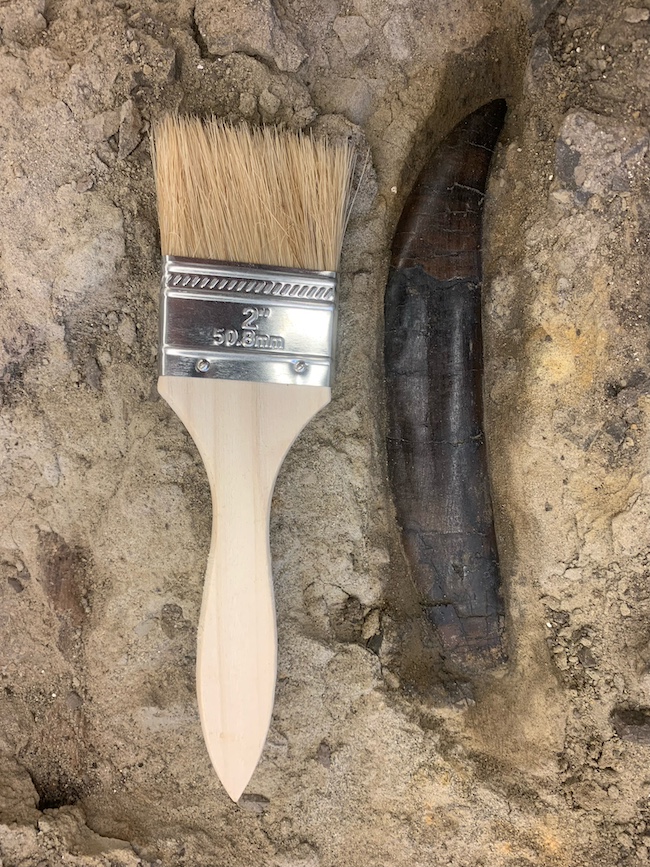
Extracting the juvenile T. Rex
For 11 days, the team carefully dug out a large chunk of rock that contained the fossil. They wrapped it in a jacket of plaster and burlap. Then, the 6,000-pound package was airlifted by a Black Hawk helicopter and placed in a heavy duty trailer. From there, it began its journey to Denver, Colorado.

At the Denver Museum of Nature and Science, scientists removed some of the burlap and plaster jacket that protected the fossil during transport. The museum has now begun the painstaking process of extracting the fossil from rock.
The museum announced that starting June 21, 2024, visitors will be able to watch scientists work in real-time as they carefully remove the fossil from the rock. They also said Teen Rex’s discovery and excavation will be featured in a new film about T. rex that is opening in IMAX theaters nationwide.
What we know about Teen Rex
Tyrannosaurus rex, often called T. rex, lived during the late Cretaceous epoch, which was 100 to 66 million years ago. Its fossils have been found only in western North America. T. rex was a large bipedal carnivorous dinosaur, with sharp pointed saw-edged teeth. Its powerful jaws and teeth could break bones. Scientists think adults reached a length of 40 feet (12 m) or more. And it could have weighed over 11,000 pounds (5,000 kg).
Teen Rex is a significant discovery. That’s because most T. rex fossils are adults. There aren’t many juveniles in the fossil record. Researchers need more juveniles to compare them, so they can better understand how these ferocious creatures grew and developed during their teenage years to adulthood.
The Teen Rex fossil was a partial skeleton consisting of sections of the skull, tail, leg and hip. It’s only about 30% of the total skeleton, but there’s still a lot scientists can learn from it.

Answers from the T. rex skeleton
For instance, how did they know that Teen Rex was a juvenile? Its tibia (or shin bone) provided the first clue. It measured about 32 inches (81 cm). A full-grown T. rex’s tibia would have measured about 44 inches (112 cm). Teen Rex’s teeth were also smaller than that of an adult.
In addition, based on the size of the bones, researchers think Teen Rex measured about 25 feet (7.5 m) long and 10 feet (3 m) tall. They believe the dinosaur weighed about 3,500 pounds (1,590 kg). But that’s just an initial estimate. They’ll need to recover more bones to get a more accurate idea of Teen Rex’s size.
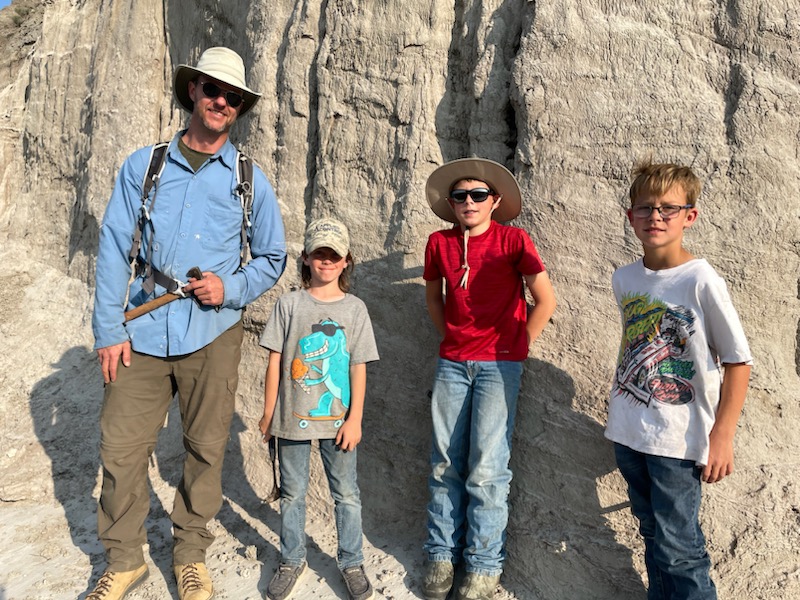
Bottom line: A family fossil hunting in the North Dakota badlands stumbled across an intriguing fossil that was later identified as a rare juvenile T. rex.
Via:
Denver Museum of Nature & Science Online Magazine
Denver Museum of Nature and Science
The post Rare juvenile T. rex discovered by young fossil hunters first appeared on EarthSky.
from EarthSky https://ift.tt/g8ux2OZ

A couple years ago, three young boys fossil hunting in the North Dakota badlands discovered some unusual ancient dinosaur bones. And on June 4, 2024, the Denver Museum of Nature and Science said its scientists later identified the bones as belonging to a rare juvenile Tyrannosaurus rex. The bones will be on view at the museum starting this month. And, it turns out, the fossil – nicknamed Teen Rex – is significant. That’s because few juvenile T. rexes have ever been unearthed. So this specimen is a valuable clue in understanding how these ferocious dinosaurs grew to adulthood.
Discovering the teenage T. rex
In July 2022, three young fossil hunters were searching the arid badlands near Marmarth, North Dakota, for fossils. Liam Fisher was eight years old at the time, his brother Jessin, 11, and their cousin, Kaiden Madsen, was 10. The kids were accompanied by the brothers’ father, Sam Fisher.
The young fossil hunters were amazed to discover large bones protruding from sedimentary rock that formed the badlands hills. Some bones were in fragments, weathering out of the rock. Sam Fisher sent photos of this unusual find to his friend, paleontologist Tyler Lyson at the Denver Museum of Nature and Science. Lyson immediately recognized it as dinosaur bone but could not identify it.

A stunning realization
In July 2023, Lyson and his team went to the site to excavate the fossil. The young fossil hunters who made the discovery joined the expedition. While digging, Lyson unearthed teeth that clearly belonged to a T. rex. Based on the size of the exposed bone and teeth, he realized that the kids had made an extraordinary discovery, a rare juvenile T. rex.
Lyson recounted that stunning moment in an interview:
Sam’s oldest boy, Jessin, and I were digging and brushing and digging and brushing, and all of a sudden, a brush and a T-Rex tooth … pops off, and I pick it up. I look at Jessin. He gasps. He and I, like, share this moment. And then I started brushing where the tooth came out, and we could see three more teeth all lined up in a row.
We just uncovered the lower jaw of this juvenile T-Rex specimen. It was just one of the most remarkable, remarkable moments. And you were able to tell from the size of it that it was a juvenile. We could tell based both on the size of the teeth and then also the size of the leg bone, that we had a smaller dinosaur.

Extracting the juvenile T. Rex
For 11 days, the team carefully dug out a large chunk of rock that contained the fossil. They wrapped it in a jacket of plaster and burlap. Then, the 6,000-pound package was airlifted by a Black Hawk helicopter and placed in a heavy duty trailer. From there, it began its journey to Denver, Colorado.

At the Denver Museum of Nature and Science, scientists removed some of the burlap and plaster jacket that protected the fossil during transport. The museum has now begun the painstaking process of extracting the fossil from rock.
The museum announced that starting June 21, 2024, visitors will be able to watch scientists work in real-time as they carefully remove the fossil from the rock. They also said Teen Rex’s discovery and excavation will be featured in a new film about T. rex that is opening in IMAX theaters nationwide.
What we know about Teen Rex
Tyrannosaurus rex, often called T. rex, lived during the late Cretaceous epoch, which was 100 to 66 million years ago. Its fossils have been found only in western North America. T. rex was a large bipedal carnivorous dinosaur, with sharp pointed saw-edged teeth. Its powerful jaws and teeth could break bones. Scientists think adults reached a length of 40 feet (12 m) or more. And it could have weighed over 11,000 pounds (5,000 kg).
Teen Rex is a significant discovery. That’s because most T. rex fossils are adults. There aren’t many juveniles in the fossil record. Researchers need more juveniles to compare them, so they can better understand how these ferocious creatures grew and developed during their teenage years to adulthood.
The Teen Rex fossil was a partial skeleton consisting of sections of the skull, tail, leg and hip. It’s only about 30% of the total skeleton, but there’s still a lot scientists can learn from it.

Answers from the T. rex skeleton
For instance, how did they know that Teen Rex was a juvenile? Its tibia (or shin bone) provided the first clue. It measured about 32 inches (81 cm). A full-grown T. rex’s tibia would have measured about 44 inches (112 cm). Teen Rex’s teeth were also smaller than that of an adult.
In addition, based on the size of the bones, researchers think Teen Rex measured about 25 feet (7.5 m) long and 10 feet (3 m) tall. They believe the dinosaur weighed about 3,500 pounds (1,590 kg). But that’s just an initial estimate. They’ll need to recover more bones to get a more accurate idea of Teen Rex’s size.

Bottom line: A family fossil hunting in the North Dakota badlands stumbled across an intriguing fossil that was later identified as a rare juvenile T. rex.
Via:
Denver Museum of Nature & Science Online Magazine
Denver Museum of Nature and Science
The post Rare juvenile T. rex discovered by young fossil hunters first appeared on EarthSky.
from EarthSky https://ift.tt/g8ux2OZ




